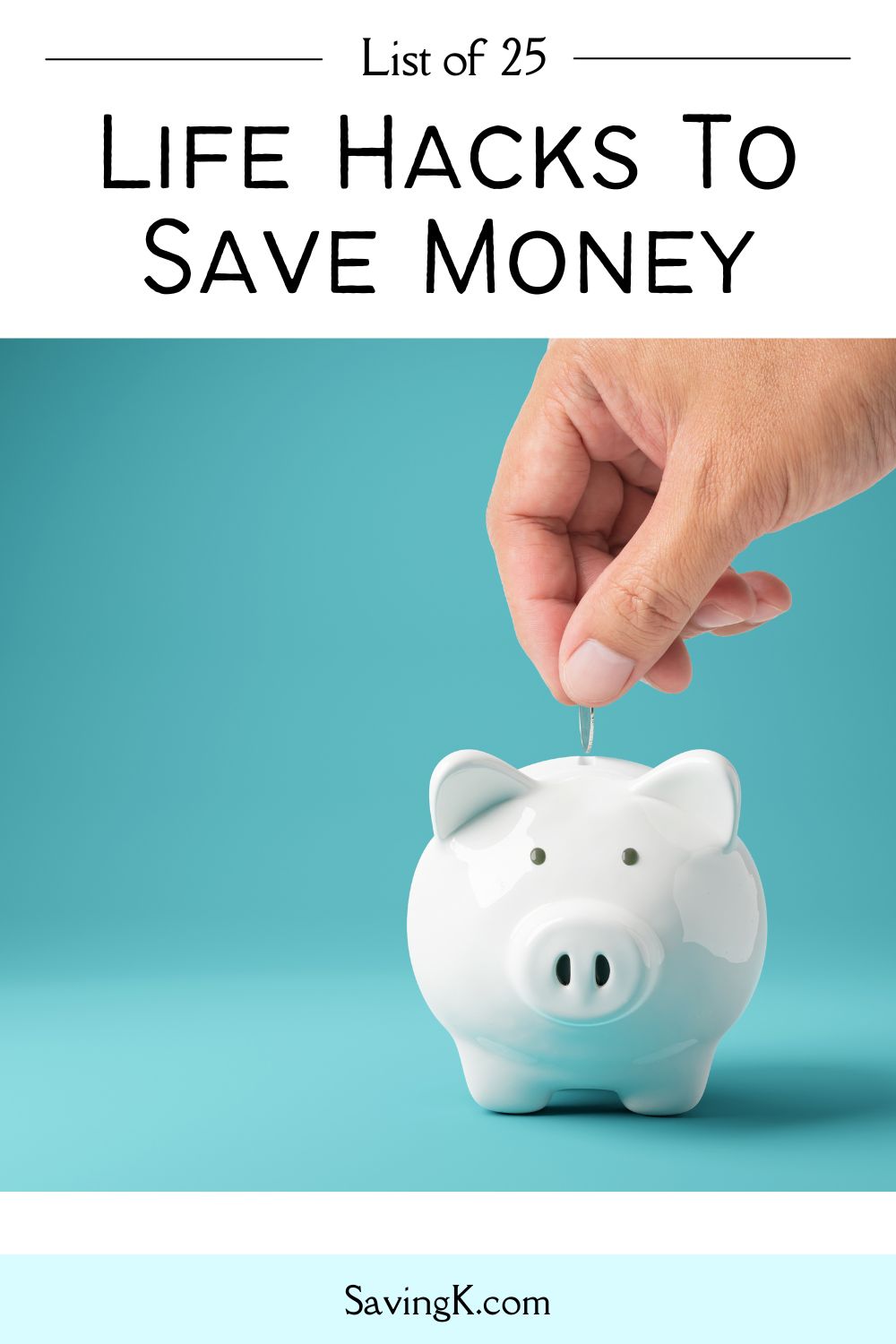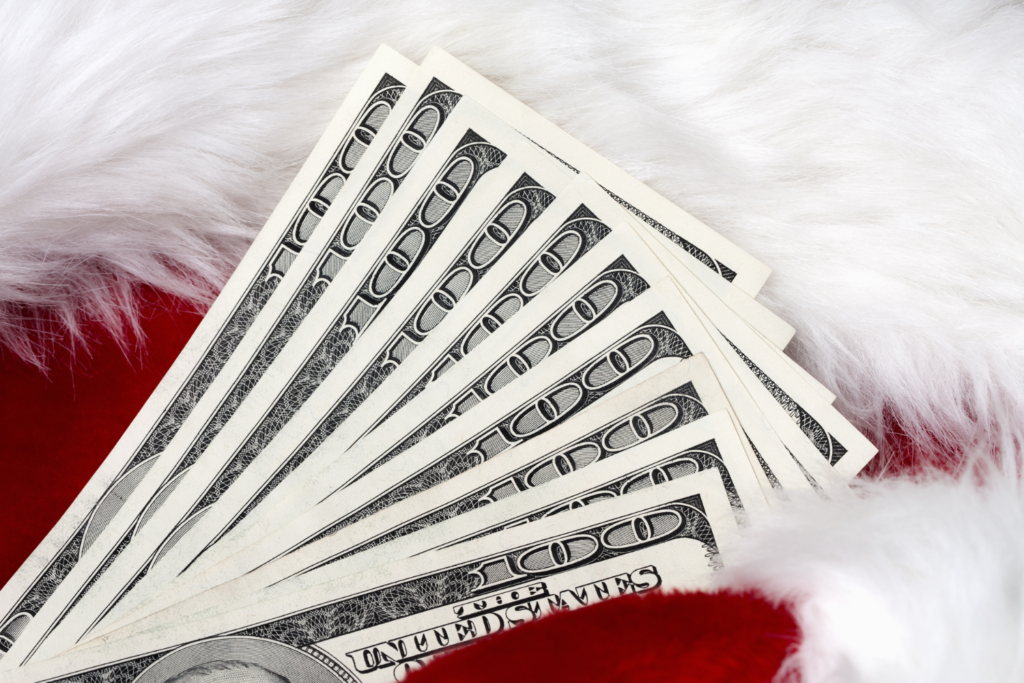
While most money-saving advice focuses on big sacrifices, the path to financial freedom often lies in smaller, unexpected changes to your daily routine. From turning toilet leak detection into a colorful game to transforming your shopping habits with a simple basket switch, these creative life hacks to save money prove that saving money doesn’t require a complete lifestyle overhaul.
Contents
- 25 Genius Life Hacks To Save Money
- 1. Use Cashback and Rewards Apps
- 2. Buy Prescription Drugs Without a Membership
- 3. Optimize Credit Card Usage
- 4. Pay with Cash to Reduce Spending
- 5. Make Your Own Household Cleaners
- 6. Detect and Fix Toilet Leaks
- 7. Avoid Impulse Buys at the Grocery Store
- 8. Ask for Free Upgrades
- 9. Save Rainwater
- 10. Adjust Your Sleep Schedule
- 11. Cook Meals in Bulk and Freeze Leftovers
- 12. Use Energy-Efficient Practices
- 13. Shop Smart for Groceries
- 14. Make Your Own Coffee and Drinks
- 15. Use Cashback and Rewards Credit Cards
- 16. Cancel and Rotate Subscriptions
- 17. Shop Secondhand and Host Clothing Swaps
- 18.Take a 72-Hour Pause Before Buying
- 19. Pay Yourself First and Automate Savings
- 20. Use the Bill Pay Off Switcheroo
- 21. Exercise Daily and Maintain Good Health
- 22. Use a Slow Cooker for Multiple Purposes
- 23. Use an Electric Teapot Efficiently
- 24. Shop Your Own Closet
- 25. Avoid Shopping on an Empty Stomach
- Bonus Tip: Skip Rental Car Insurance
- Making Smart Money Moves
25 Genius Life Hacks To Save Money
Think of these life hacks as financial micro-adjustments – tiny tweaks that create significant impact over time. By implementing these practical strategies, you could potentially save thousands annually without feeling deprived or overwhelmed. The key is starting small and letting these habits compound naturally into substantial savings.

1. Use Cashback and Rewards Apps
Get money back on everyday purchases through popular apps like TopCashback, Ibotta, and Fetch Rewards. These apps let you earn cash back on groceries, gas, and online shopping by scanning receipts or linking your cards. With strategic use across multiple apps, you could pocket an extra $400 annually – that’s around $33 monthly in effortless savings.
2. Buy Prescription Drugs Without a Membership
You don’t need a warehouse membership to save big on prescriptions. Costco’s pharmacy is open to non-members, often beating prices at traditional drugstores by 50-80%. For example, a 30-day supply of generic Lipitor might cost $15 at Costco compared to $40 at chain pharmacies. Always compare prices at multiple locations to maximize your savings.
3. Optimize Credit Card Usage
Transfer high-interest credit card balances to cards offering 0% introductory APR periods. This smart money move can save you hundreds in interest charges while you pay down debt. Just watch for balance transfer fees and create a solid repayment plan to clear the balance before the promotional rate expires. Make consistent, timely payments to protect your promotional rate and avoid new debt accumulation.
4. Pay with Cash to Reduce Spending
Using cash creates a powerful psychological barrier against overspending. When you hand over physical bills, you feel the impact of each purchase more deeply than swiping a card. Try carrying $100 bills instead of smaller denominations – you’ll think twice before breaking that big bill for impulse buys. Consider using cash envelopes (also known as cash stuffing) labeled for different budget categories like groceries, entertainment, and dining out to maintain strict spending limits.
5. Make Your Own Household Cleaners
Mix vinegar, baking soda, and water to create powerful, budget-friendly cleaners that cost pennies compared to store-bought alternatives. A homemade glass cleaner costs just 35 cents versus $4.39 for commercial brands. While these natural solutions work great for daily cleaning, keep commercial products handy for tough stains and specialized tasks. Your wallet and the environment will thank you.
6. Detect and Fix Toilet Leaks
A simple food coloring test can reveal hidden toilet leaks that waste up to 200 gallons daily. Add a few drops to your tank and wait 30 minutes – if color appears in the bowl, you’ve got a leak. Check the flapper, fill valve, and water level for quick fixes. For base leaks, tighten the closet bolts or replace the wax ring. Regular maintenance prevents costly water bills and protects your wallet.
7. Avoid Impulse Buys at the Grocery Store
Want to curb unnecessary spending at the supermarket? Skip the shopping cart and carry your items instead. This simple strategy makes you more mindful of each purchase since you’ll physically feel the weight of your selections. When you’re limited by what you can carry, you’ll naturally stick to your shopping list and think twice before grabbing those tempting but unneeded extras. This approach not only helps your budget but also reduces waste by preventing over-buying.
8. Ask for Free Upgrades
Flying in style doesn’t always require deep pockets. Having airline elite status remains the golden ticket, potentially saving thousands on premium seats. Solo travelers often have better chances – there’s usually just one upgrade spot available. Join airline loyalty programs and check in exactly 24 hours before departure for optimal positioning. If your flight is oversold, volunteer to be bumped and negotiate an upgrade as compensation. Remember, politeness pays – being friendly while explaining specific seat change needs can open doors to better accommodations without opening your wallet.
9. Save Rainwater

Set up rain barrels beneath your downspouts to collect free water for your garden and lawn. A basic 50-gallon barrel can slash your water bill while nourishing plants with natural, chemical-free moisture. Many cities offer rebates or tax incentives for rainwater collection systems, making the initial investment even more attractive. By harvesting rain, you’ll reduce stormwater runoff that strains local infrastructure and help conserve precious groundwater resources for future generations.
10. Adjust Your Sleep Schedule
Aligning your sleep with natural daylight hours can trim your energy bills while improving your well-being. Based on Department of Energy findings, Americans save roughly 1.3 TeraWatt-hours annually by maximizing daylight hours – that’s over 1 billion kilowatt-hours in total. While newer studies show some of these gains might be offset by increased air conditioning use, syncing your daily routine with the sun remains a smart money-saving strategy.
11. Cook Meals in Bulk and Freeze Leftovers
Batch cooking saves money while saving precious time. By buying ingredients in larger quantities and dedicating a few hours to bulk cooking, you’ll spend less per meal and avoid costly takeout temptations. Simply portion your cooked food into freezer-safe containers, label with dates, and reheat when needed. This smart kitchen strategy typically reduces food costs by 25-30% while ensuring you always have healthy, homemade meals ready to enjoy.
12. Use Energy-Efficient Practices
Want to slash those utility bills? Install a programmable thermostat to automatically adjust temperatures, saving up to 10% annually. Turn it back 10-15 degrees for 8 hours while you’re at work or sleeping. Seal air leaks around windows and doors, and add proper insulation to your attic and walls – these simple fixes can cut heating and cooling costs by 15%. Replace old appliances with ENERGY STAR models and switch to LED bulbs for additional savings that add up fast.
13. Shop Smart for Groceries
Compare unit prices at discount stores to find real savings – generic brands often match name-brand quality at 30% lower cost. Focus on seasonal produce when prices naturally dip – summer berries cost half as much in-season versus winter. Stock up during sales by checking store flyers and using apps like Flipp to price match.

Local ethnic markets typically offer better deals on produce and staples than traditional supermarkets. Plan your meals around what’s on sale and in season, and always shop with a detailed list to avoid impulse purchases. Buy in bulk for shelf-stable items like rice and beans when unit prices make sense.
14. Make Your Own Coffee and Drinks
Skip the coffee shop lines and save significantly by brewing at home. A quality cup of home-brewed coffee costs around $0.57 compared to $4-5 at cafes. Using organic, fair-trade beans and reusable filters reduces environmental impact while supporting sustainable farming practices.
Avoid single-serve capsules that generate excess waste – their packaging often outweighs the coffee inside. Instead, invest in a French press or pour-over setup for barista-worthy drinks at a fraction of the cost.
Bring a reusable thermos when you do visit coffee shops to minimize disposable cup waste while still supporting local businesses. The simple switch to homemade beverages could save over $1,000 annually while reducing your environmental footprint.
15. Use Cashback and Rewards Credit Cards
Maximize savings by choosing cards offering the highest cash back rates in your primary spending categories. Combine a flat-rate card earning 2% on everything with category-specific cards offering 5% or more on groceries, gas, or dining. Use issuer shopping portals for bonus cashback rewards on online purchases – these can boost earnings by an additional 5-15%.
Never carry a balance to avoid interest charges eating into your rewards. Set up automatic payments and track due dates carefully. Redeem cash back through statement credits or direct deposits rather than merchandise for the best value. Consider storing earned rewards in a high-yield savings account to maximize their impact on your finances.
16. Cancel and Rotate Subscriptions
Streamers may introduce more friction to cancellations and offer bundles to sustain revenues. Strategically rotate streaming services instead of maintaining multiple simultaneous subscriptions. Sign up for one service to watch specific shows, then switch to another platform when you’ve finished that content. This approach lets you enjoy premium entertainment while avoiding subscription overlap.
Many services offer seasonal promotions and free trials – take advantage of these deals to maximize savings. Just make sure to cancel before the free trial is up to avoid charges. By actively managing just 1-2 services at a time rather than keeping 4-5 active subscriptions, you could reduce entertainment spending by $300-400 annually.
17. Shop Secondhand and Host Clothing Swaps
Save up to 50% on clothing by embracing secondhand shopping at thrift stores, consignment shops, and online marketplaces. Quality pre-loved items often cost a fraction of retail prices while helping reduce textile waste. Make the most of your wardrobe by organizing clothing swaps with friends – it’s a free way to refresh your style while extending the life of gently used items.
Keep your clothing exchange events simple: invite 6-8 friends, set basic guidelines for item condition, and organize pieces by size and type. Consider monthly or seasonal swaps to maintain wardrobe variety without spending money on new clothes.
18.Take a 72-Hour Pause Before Buying
Before making any non-essential purchase over $50, implement a mandatory waiting period. This cooling-off window helps distinguish between genuine needs and fleeting wants. During this time, evaluate whether the item aligns with your financial goals and if you already own something similar that serves the same purpose. Research shows this simple 3-Day Rule can reduce impulse spending by up to 50%, potentially saving hundreds each month. The psychological distance from immediate gratification often reveals that many “must-have” items aren’t necessary after all.
19. Pay Yourself First and Automate Savings
Set up automatic transfers to your savings account the day after your paycheck hits. This “set it and forget it” approach ensures you’re consistently building wealth without relying on willpower. Start with 10% of your income, then gradually increase it as your budget allows. By treating savings as a non-negotiable expense, you’re prioritizing your financial future ahead of discretionary spending.
Having technology handle your transfers eliminates the risk of forgetting or choosing to skip a month. Plus, when the money moves automatically to a separate account, you’re less likely to dip into it for unplanned purchases.
20. Use the Bill Pay Off Switcheroo
Here’s a powerful way to boost your savings: redirect your old bill payments after paying off debts. When you finally clear a car loan or credit card, immediately transfer that same monthly amount to your savings account. By maintaining this “phantom payment,” you’ll accumulate significant savings without feeling the pinch – you’re already used to living without that money.
For example, if your $300 car payment ends, automatically sending that amount to savings will net you $3,600 in just one year. Combine this with other paid-off bills, and you could easily stash away $5,000-10,000 annually while living on the same budget you’ve already mastered.
21. Exercise Daily and Maintain Good Health
Regular exercise isn’t just good for your body – it’s great for your wallet too. By staying physically active, you can save approximately $2,500 annually on healthcare costs through reduced doctor visits, fewer medications, and less frequent hospitalizations. Those who maintain consistent fitness routines typically spend less on treating chronic conditions like heart disease and diabetes.
Make it a habit to move daily, whether through walking, swimming, or strength training. Consider this investment in exercise as a long-term savings strategy that pays dividends through lower medical bills and enhanced quality of life.
22. Use a Slow Cooker for Multiple Purposes
Transform your food budget and energy bills with smart slow cooker strategies. Fill the pot halfway to two-thirds full with vegetables first, then meat, for optimal cooking efficiency. Create multiple meals from single batches by repurposing leftovers into wraps or pies, stretching your grocery dollars further.
Modern slow cookers use minimal electricity while turning budget-friendly tough cuts into tender meals. Save even more by making organic beans and homemade stock, eliminating expensive store-bought versions. For best results, add liquids last and use evaporated milk instead of regular milk to prevent curdling.
23. Use an Electric Teapot Efficiently
Switch to an electric teapot and watch your energy bills shrink. These smart appliances are about 80% efficient compared to just 70% for stovetops and 50% for microwaves. Features like auto-shutoff and temperature control can reduce energy usage by up to 60%. For maximum savings, only heat the amount of water you need and use the variable temperature settings for different beverages – green tea doesn’t need boiling water like black tea does. When properly used, an electric kettle combines convenience with significant energy savings.
24. Shop Your Own Closet
Before hitting the stores, explore the hidden treasures in your existing wardrobe. Mix and match pieces you already own to create fresh looks without spending a dime. Keep a running list of true wardrobe needs rather than buying on whims.
25. Avoid Shopping on an Empty Stomach
When you do shop, always eat a meal first – shopping while hungry can increase spending by up to 40% through impulse purchases. The physical sensation of hunger often triggers reward-seeking behavior, making those extra snacks and non-essential items more tempting. By shopping with a satisfied stomach and a clear plan, you’ll make more rational decisions that align with your budget goals.
Bonus Tip: Skip Rental Car Insurance
Before paying extra for rental car insurance, check your personal auto policy – it likely already covers rental vehicles. Most full-coverage policies extend protection to rentals, potentially saving you $20-30 per day. Just verify your policy includes comprehensive and collision coverage. If driving a standard rental like a midsize sedan, your existing insurance typically provides adequate protection without costly add-ons.
Making Smart Money Moves
These money-saving life hacks demonstrate that financial wisdom isn’t about dramatic changes – it’s about making intelligent choices in everyday situations. From leveraging technology for cashback rewards to embracing simple DIY solutions, each strategy represents an opportunity to build wealth through mindful decisions.
Remember, the most successful money-saving approaches are the ones you can maintain long-term. Start by implementing two or three of these life hacks to save money that resonate most with your lifestyle, then gradually incorporate more as they become second nature. Your future self will thank you for these small but powerful financial decisions made today.




